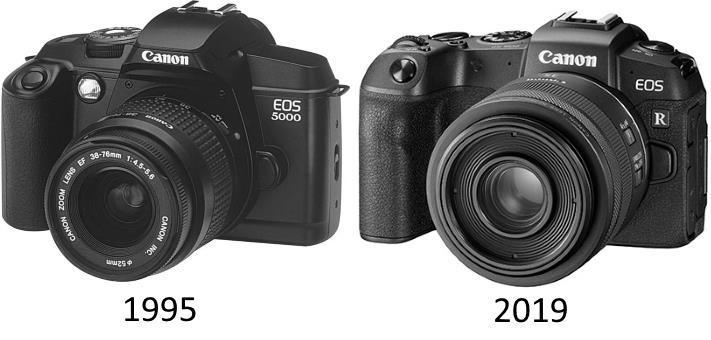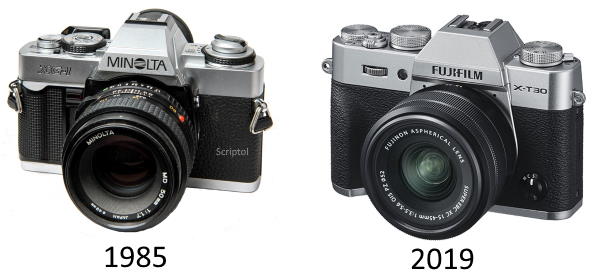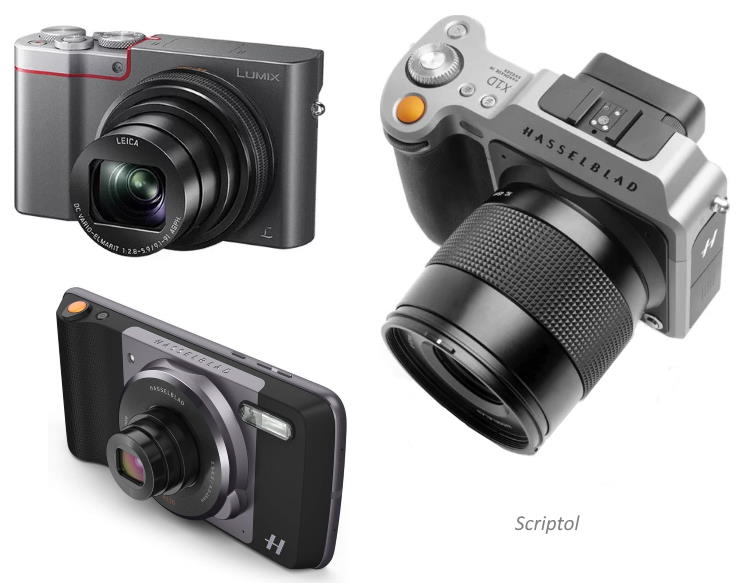The true reason for the fall of the camera
Smartphones can more or less replace them. But there is another reason.
If someone says to me:
Why buy a camera when my smartphone can take pictures no worse?
I answer ironically:
Why buy a BMW when Twingo can make travel just as good?
Many people buy more comfortable, more powerful cars with more features, and they are the same for city cars as cameras for smartphones. So why did sales of these devices fall by 90% between 2012 and 2019?
Manufacturers attribute the shrinking market to smartphones, and there is no doubt that they are more practical for everyday photos. However, the cameras offer significantly better usability and performance, and are better suited for taking a series of shots. The truth is that manufacturers are doing nothing to make today's public really want to buy them.
Their conservatism is first seen in their appearance. Compare the 2019 Canon EOS RP with the 1995 EOS 5000 model:

This is not to say that real modernization efforts have been made to please fans accustomed to the sleek and elegant appearance of smartphones!
Fujifilm (like Olympus, for that matter) goes even further and is not afraid to give its latest models a truly retro look...

In fact, this style dates back to 1959 with Nikon F, the first DSLR!
What makes manufacturers think users want to step into a time machine when they want to take photos? If they were designing cars instead of cameras, they'd probably think Model T Ford styling was the most appropriate way to attract buyers...
Cameras, however, can look like this...

The image shows Lumix, whose small sensor unfortunately offers limited options, and Hasselblad targeting a wealthy audience, so the modern look feels overwhelming for today's dedicated photography enthusiast. You have to love retro.
Looks aren't the only thing driving potential buyers away from these products. Unlike other sectors of the industry, where innovation from one manufacturer is immediately adopted by competitors so as not to be left behind, it is this industry that is comfortable with incomplete products.
- Panasonic and Olympus cameras offer almost every feature you would expect, including high-resolution mode and focus alignment (see photo glossary), but use a smaller, less powerful sensor and no computational photography to compensate.
- Sony sees no point in equipping its cameras with a touch screen or pre-shooting.
- Canon has long offered a touchscreen, but hasn't bothered to offer stabilization inside the case or digital zoom.
- Fujifilm too. But it is the only one that allows you to add a voice message to the photo.
- Nikon recently decided to switch to mirrorless cameras, still believing that mirrorless SLR cameras will work forever.
- No brand offers voice control like GoPro.
Manufacturers seem to have no idea what customers really want from a camera. In 2019, Canon released the M6 II, a model that is a significant improvement over the previous version. But still no stabilization inside the case, and instead of the digital zoom offered by all smartphones, they offer "creative filters"...
Here's the first:

"Makes the image grainy and black and white. By adjusting the contrast, you can change the black and white effect."
What this gives:

My compact TZ camera also gets creative as soon as the lights drop.
The second creative effect is as follows:

"Gives the image a blurry look. By adjusting the haze, you can change the amount of blur ."
And we get this:

And I'm not talking about the third "creative" filter. The proposed image-distorting fisheye effect is the third scourge of photography, along with the previous two...
This is instead of the image below with authentic rendering that we might prefer:

If you really want these "creative" effects, they can be achieved very easily with Paint.Net or other photo editing software, and it's no more difficult than going to the camera menu to find these filters, and remember to go back there to get the images back to normal, or you risk unpleasant surprises.
Another thing that contributes to public disinterest is the policy of not cannibalizing (except Fujifilm): Features are removed from cheaper models, especially software, without reducing cost, to encourage people to buy more expensive models. And these expensive models are full-frame cameras, which in turn require the purchase of very expensive lenses.
These full-frame cameras that want to push the purchase are really only justified for professional photographers. And most people don't want to become photographers, even amateurs. What they are looking for is the magic of images that are captured for eternity. And magic, unfortunately, is really found only in smartphones.
Second part: Evolution of the smartphone versus the camera.